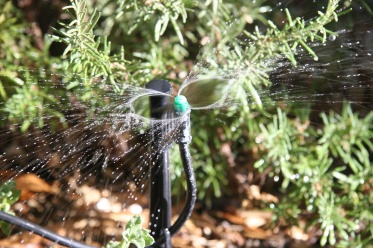This month in “Tips for the Garden,” I am going to focus on trees and pumpkins. Quite a different combination, but both need attention this time of year.
The Many Benefits of Planting Trees
Most often, we plant trees to provide shade and add beauty to our landscape. These are great benefits. Consider all the benefits listed below and remember fall is the perfect time to plant trees for an increased success rate next spring.·
Plant as living memorials, to remind us of loved
ones, or to commemorate events in our lives.
·
Even though you may own the trees on your
property, your neighborhood may benefit from them as well. Through careful
planning, trees can be an asset to your entire community.
·
Tree lined streets have a traffic calming
effect, traffic moves more slowly and safely.
·
Trees can be placed to screen unwanted views or
noise from highways.
·
Trees improve our air quality by filtering harmful
dust and pollutants.
·
Trees give off oxygen that we need to breathe.
·
Trees reduce the amount of storm water runoff,
which reduces erosion and pollution in our waterways and may reduce the effects
of flooding.
·
Many species of wildlife depend on trees for
habitat. Trees provide food, protection, and homes for many birds and mammals.
·
Tree can reduce your cooling costs by shading
the south and west sides of your home. If deciduous trees are used, they will
allow the sun to pass through and warm your home in the winter.
·
Evergreen trees on the north side of your home
and shrubs around the foundation of your home can act as a windbreak to reduce
the cooling effects of winter winds.
· The value of a well landscaped home can be as much as 10% higher than a similar home with no or little landscaping.
Now let’s change the focus. This is the month for HALLOWEEN!!! What a great and fun time to decorate and enjoy the season with the children of the neighborhood. Here are “Tips for Selecting and Preserving Your Pumpkin.”
When selecting a
pumpkin for a jack-o-lantern, choose one that does not have any bruises. Check
for discoloration and soft spots.
Pumpkins that are flatter on the bottom and do not roll well work the best. Look for pumpkins with a sturdy stem. Do not lift or carry the pumpkin by the stem, this can damage it and make it age faster. Check the bottom of the pumpkin to see if the base is damaged.
Preserving and Firming Up a Pumpkin
Ways to help keep your pumpkin fresher and firmer. If you place a pumpkin in cold water, it will absorb the water and become very firm. Cut open the top of the pumpkin and clean out all the seeds. If you have fine detail work to do, you may want to let your pumpkin soak overnight. You can add a small amount of unscented Clorox bleach in the water to prevent premature mold and bacteria growth. Once you
have carved your pumpkin, you can add a thin amount of petroleum jelly on the
exposed cut edges. This will help seal moisture of the pumpkin. If the pumpkin
dries out, it will shrivel. You can try to revive it by soaking it in a bath of
cold water for one to eight hours. Longer is better. Overnight will not hurt.
You can
prepare your pumpkins ahead of time and keep them fresh for a future party or
gathering. Soak them first. Wrap them in plastic wrap to hold in the moisture
and store them in the refrigerator (not the freezer). They will stay
fresh this way for a very long time.
Once you
remove a wet pumpkin for display, you should immediately dry it off. This
prevents mold from having a chance to grow.
Now, enjoy all that the month of October has to offer and I will…
See you in the garden.
Sandi Hillermann McDonald





 Water conservation is of the utmost importance during our dry summer months. Water where it counts, at the roots, not the leaves. Drip irrigation systems in landscape beds do wonders for water conservation and are easy for the homeowner to install. Trees and shrubs would also benefit from a deep root watering this time of year. You can use a deep root feeder (without the fertilizer) for this purpose. Water plants around the drip line for best success. Doing this every 2-3 weeks is beneficial. When you mow your grass, cut it less frequently and at a higher level. Longer grass blades shade the soil and conserve moisture. Plant drought tolerant, native plants where possible.
Water conservation is of the utmost importance during our dry summer months. Water where it counts, at the roots, not the leaves. Drip irrigation systems in landscape beds do wonders for water conservation and are easy for the homeowner to install. Trees and shrubs would also benefit from a deep root watering this time of year. You can use a deep root feeder (without the fertilizer) for this purpose. Water plants around the drip line for best success. Doing this every 2-3 weeks is beneficial. When you mow your grass, cut it less frequently and at a higher level. Longer grass blades shade the soil and conserve moisture. Plant drought tolerant, native plants where possible.








